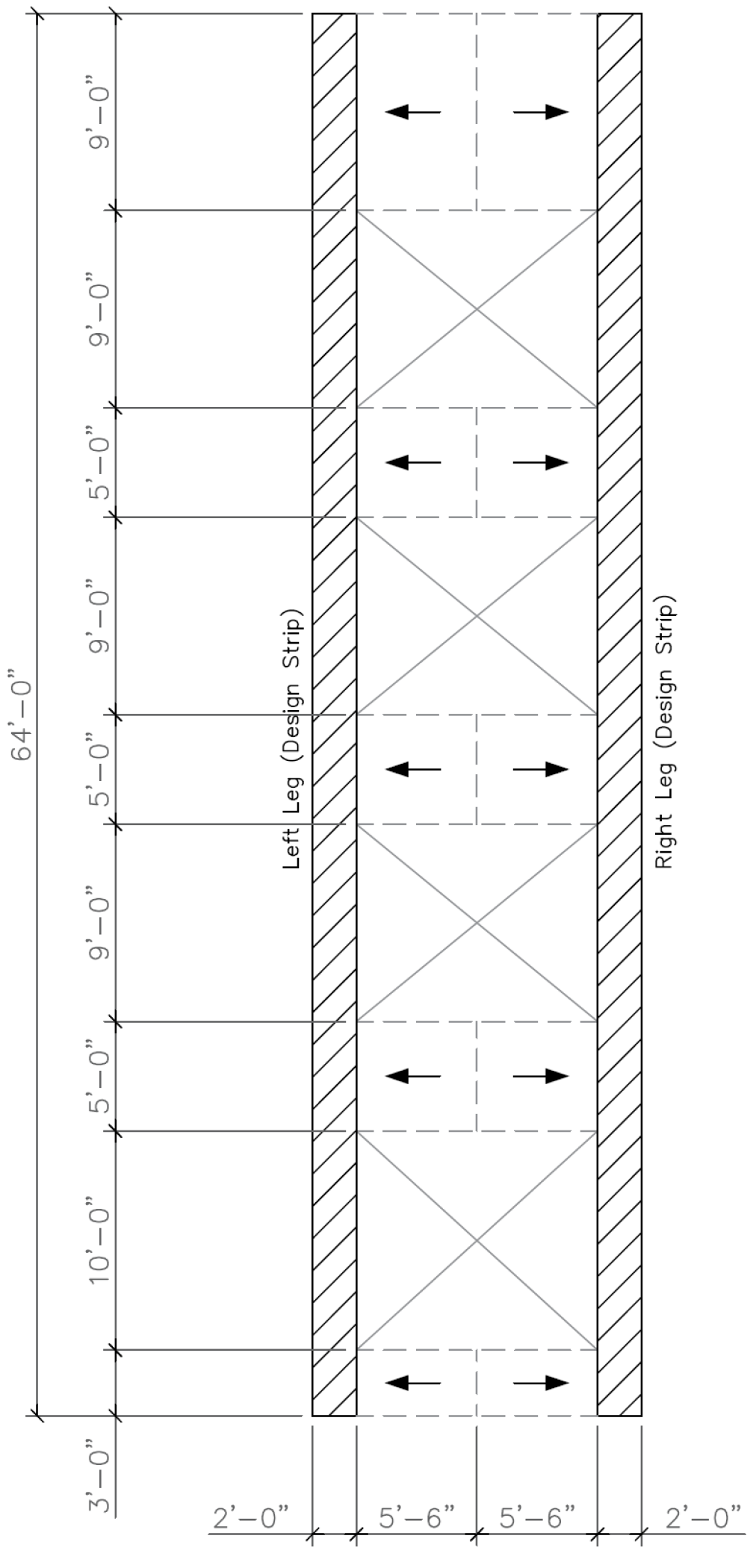According to ACI 551, continuous wall panels maybe analyzed and designed using the alternative design method in Chapter 14 of ACI 318-11 (Alternative Method for Out-of-Plane Slender Wall Analysis in Chapter 11 of ACI 318-14). The effect of openings on out-of-plane bending in tilt-up panels can be approximated in hand calculations by a simplified, one-dimensional strip analysis. Where openings occur, the entire lateral and axial load, including self-weight above the critical section, is distributed to supporting legs or design strips at each side of the opening (sometimes referred to as wall piers).
ACI 551.2R-15 (7.2)
The effective width of the strip should be limited to approximately 12 times the panel thickness to avoid localized stress concentrations along the edge of the opening. This limit is not mandated by ACI 318, but is included as a practical guideline where the opening width is less than one-half the clear vertical span. In most cases the tributary width for loads can be taken as the width of the strip plus one-half the width of adjacent openings. Tilt-up design strips should have constant properties for the full height and the reinforcement should not be cut off just above or below the opening. Thickened vertical or horizontal sections can be introduced within the panel where openings are large or where there are deep recesses on the exterior face. Some conditions may require ties around all vertical reinforcement bars in a vertical pilaster (wall pier) for the full height of the tilt-up panel.
ACI 551.2R-15 (7.2)
No minimum limits are provided in ACI 551 on the width or thickness of the wall piers in panels with openings. Similarly, no limits are provided on horizontal sections (header beams) where openings are large. Therefore, slenderness effects and reinforcement size and confinement must be optimized to achieve adequate strength and stability. Slender column and deep beam provisions of ACI 318 can quickly become applicable in such circumstances. A detailed investigation of slenderness effects on the stability of the design strips is provided at the end of this example.
1.2. Tilt-Up Wall Panel Design Strips
Using ACI 551 guidance, the wall panel can be idealized as two design strips with constant section as shown. The left strip analysis and design will be carried out in details.

Figure 2 - Tilt-Up Design Strips Tributary Widths - Self-weight & Wind Loads